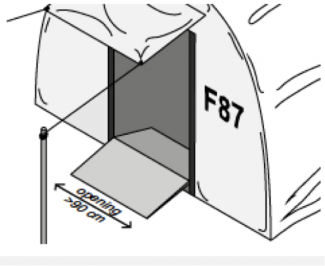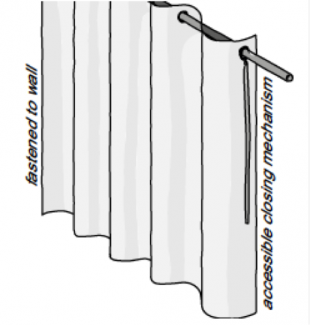Tent
Standard tent solutions
During the first deployment phase, standard tent may be used. Simple adaptation can be realised in order to ease persons with disabilities' mobility and independence.
- Ensure site access;
- Barrier-free entrance (avoid steps or thresholds, ensure wide enough door, attention to guide ropes for ease of movement around shelter, take into account need for drainage, might be better to have tent opening that is facing downslopes);
- If need for threshold, consider a flap that can be moved to horizontal position or construct a small ramp for wheelchair users to cross;
- Mark the entrance with another colour or tape for better visibility (5 cm wide);
- Identify accessible opening and closing techniques for the entrance, such as a rope or a stick attached to the zip, or using Velcro or magnets;
- Offer assistance to persons with disabilities to erect the tent and send volunteers to check on upgrade or regular maintenance.
Tips! Erect a sample tent together with persons with different types of disabilities, women and men, and discuss possible solutions to eliminate barriers and improve designs.


Internal distribution
If the tent is large enough, make sure that the wheelchair users have space to maneuver inside (150 cm turning radius). This will also facilitate carers supporting persons with disabilities when needed.
Provide mats or additional tarpaulin sheets to make internal partitions in order to increase privacy of persons with disabilities for personal hygiene or other reasons, notably for female privacy. If the tent is too small to allow persons with disabilities privacy inside, consider an extension.

